| |||
| OPINION | |||
| | |||
So the ruling CPI(M) government and party have unleashed a reign of terror in Nandigram. But what about the opposition that seeks to initiate another round of political discomfiture and fear elsewhere? Is that what the state's people want, a choice between two straitjackets? Updates   | |||
| | |||
Between December of last year and now, Kolkata and West Bengal has been in a state of extreme and almost continuous political disarray. The situation has made many recall the troubled 60s, the days of the first Naxalite movement in the state. Many remember the early CPI(M)’s repression in the Sunderban region during the 70s. But the current situation is more pervasive and, to my mind, more grave than earlier precedents.
The ruling faction of the CPI(M) wants to liberalize the state’s economy. The Tata small car factory in Singur and the chemical hub in Nandigram are a part of that enterprise. The opposition, indeed CPI(M)’s own allies, refuse that drive. In between these two poles we hear a series of arguments: Let the villagers who are losing or giving up land (depending on who’s speaking) be properly compensated first, or open up the locked out jute mills and promote cottage and small scale industry instead of inviting big business, find mono-crop land instead of multi-crop territory...and so on. This clamor of voices, more intense and confused today after the latest Nandigram tragedy has made the West Bengal public-political sphere our own tower of Babel.
On March 14th a large contingent of 4,000 policemen — the figures change with the narrative — were dispatched to Nandigram ostensibly to repatriate some locals who also happen to be affiliated to the CPI(M). The state government’s argument, given to the public, it should be noted, only after the police was met with a belligerent brigade of villagers (and others), was that Nandigram had become an independent zone within the state. No sovereign government, it was argued, could tolerate such a challenge to its authority. Television cameras captured the scenes of intense firing, bloodshed, and deaths that occurred when the police force was confronted with villagers, many of whom, it was quite clear, were heavily armed. The injuries, deaths, and suffering have been untold. The local hospitals in Tamluk, where the injured were taken, had no medical supplies or doctors to attend to the suffering.
Today, March 15th, the chief minister told the state assembly that peace had been restored in Nandigram. The television channels that broadcast his address, split into two to show another face of that so-called peace and order. An angry crowd of about 5,000 had congregated before the Block Development Office and were baying for the officer’s blood. A contingent of 400 police faced with that crowd fired another round of tear gas, injuring journalists, locals, and others.
In the meantime Mamata Bannerjee and her team called yet another bandh for Friday March 16th. It is of little consequence that the bandh happens to coincide with the scheduled first day of the higher secondary examinations in the state. That exam has now been postponed to April 18th, causing tremendous inconvenience to lakhs of students. But Bannerjee says that’s a small price to pay for the Nandigram deaths. Bannerjee also stated, rightly this time, that the Tamluk hospitals are without medical aid. Victims are unattended, and even family members cannot reach them. But her ears are sealed to people who ask how any of these serious problems will be addressed by another bandh. Or for that matter by her party workers burning a few more buses? Bannerjee is quick to draw attention to CPI(M) party cadres who, she claims, have unleashed a reign of terror in Nandigram. And so her party seeks to initiate another round of political discomfiture and fear elsewhere.
This is a tragedy. There can be no equivocation about it.
But who pays the price for all this and where will it end? Will it be the Class XII students who have been preparing to take one of the most critical examinations of their lifetime? Whether or not Banerjee and her allies accept it, the fact is that these students still have to fight out their livelihood battles in a global marketplace. Will anyone down the line make allowances for their performance deficiencies because they happened to have the misfortune of being students in an anarchic state? Will the ruling party be responsible for these futures?
We are told that hospitals and public services in Nandigram are non-existent. Yet, wasn’t it also true that the Trinamool Congress backed opposition in the area had dug up all roads leading to Nandigram? How can you destroy some public services and demand that others work when an emergency occurs? How can you break the law and then demand that there is no rule of law in a state?
As for the CPI(M), it is unclear to this observer at least as to why the Bhattacharya government continues to be so arrogant and high-handed. Despite repeated queries, commissions and reports, we still don’t know why Singur was chosen over any other land. Why not Durgapur where the government owned a lot of land and which actually fulfilled the Tata requirement of being connected to major roadways? We still don’t know why the state will not try to use the land in locked out factories and jute mills closer to Kolkata.
Coming to the latest Nandigram matter: Why did Bhattacharya keel to the local district party leadership’s demands and deploy such a heavy contingent of policemen yesterday in the area? The villages, as we know, were still quite disturbed from events that had occurred a short while ago in January. We are in the dark as to why he did not consult even the Front’s own allies before taking such a drastic step. It is true that to have a state within a state is not desirable and that is what was happening in Nandigram. But could the matter not be resolved through an all-party dialogue of the kind that Bhattacharya has claimed he isn’t averse to? Bhattacharya's decision points to a rot in the CPI(M) party machinery. The party now faces a situation where the district and village cadres, whose power has been nurtured for over three decades for purely electoral gains, now pull in directions that the main leadership does not necessarily subscribe to but has no way of controlling.
Bhattacharya is being compared to Mikhail Gorbachev. And I think the comparison is not without reason. Bhattacharya has vision. He clearly wants to make West Bengal competitive with other Indian states that are economically buoyant. But, putting it mildly, he is a public relations disaster. How can a leader of a democratically elected government behave in such a high-handed fashion? Bhattacharya seems to be his own worst enemy. While his thinking undoubtedly marks a departure from the entrenched, singularly-motivated-by-electoral-success brand of politics of his predecessors, his seeming political arrogance is leading all his projects astray. Thanks to him, we now have calls for the imposition of President’s Rule in West Bengal. Thanks to his short-sightedness, we have had yet another instance of police brutalism in the state.
But in the midst of this political doom, the questions have not died. And we don’t want them to in the endless politicking between the Left and its opponents. We ask if all this signals the end of economic liberalization in West Bengal? If yes, then is that what citizens in the state wish? What is the ordinary person’s vision of the future in that state? Many have argued that liberalization is not a guarantee to better public services, to healthcare, to livelihood, to jobs, to education.Perhaps not. But can we get a few positive outlines from the opposition parties or from anyone else about what might be? The state needs people who can think outside of "Left versus non-Left" "Socialist versus Capitalist" "Police versus Mob" straitjackets. Will such clear voices emerge out of our tower of Babel? When will we hear them?
Rochona Majumdar is Assistant Professor Department of South Asian Languages and Civilizations University of Chicago, USA
www.outlookindia.com
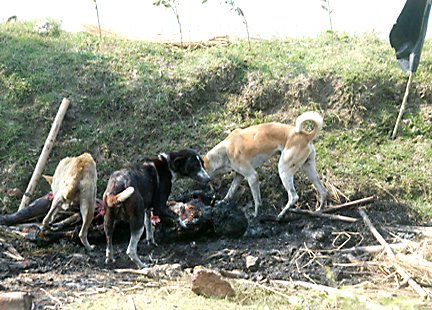

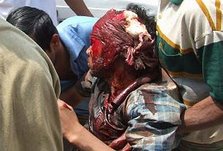
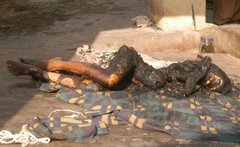
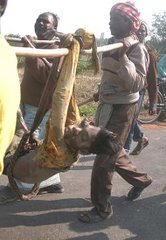
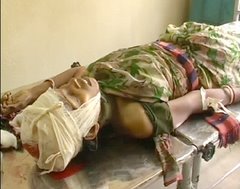

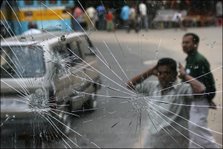
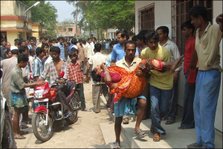

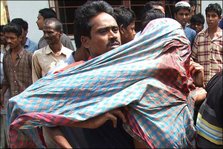


No comments:
Post a Comment